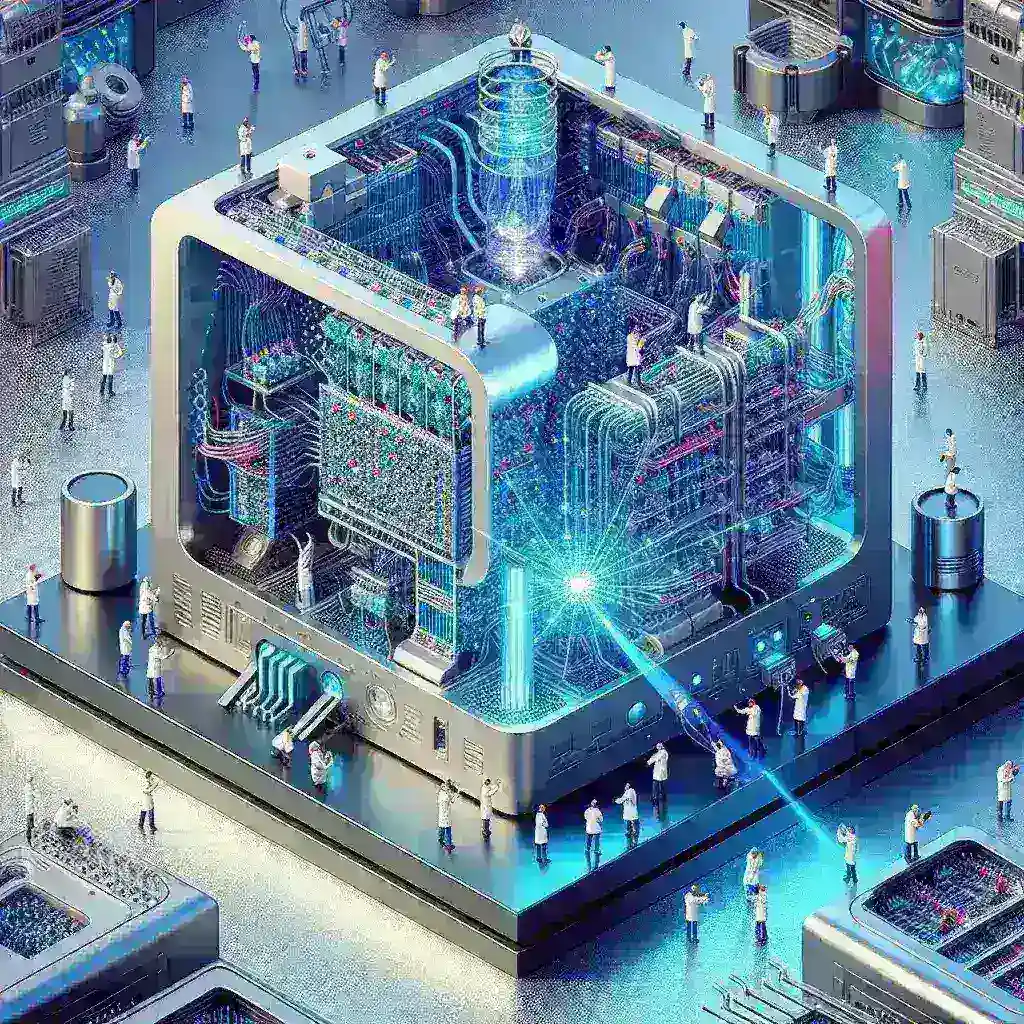Quantum Computing Achieves Error Correction Milestone
The Quantum Computing Revolution
Quantum computing has been a topic of fascination since its inception, promising to revolutionize the way we process information. Unlike classical computers that rely on bits as the smallest units of data, quantum computers utilize qubits, which can represent and store information in both 0s and 1s simultaneously due to their quantum nature. This parallelism allows quantum computers to perform complex calculations at speeds unattainable by classical computers.
Understanding Error Correction in Quantum Computing
One of the significant challenges in quantum computing is the issue of error rates. Qubits are sensitive to their environment and can easily lose their quantum state through a phenomenon known as decoherence. This instability can lead to computational errors, hampering the reliability and efficiency of quantum computations. Therefore, error correction is crucial for the practical application of quantum computing.
The Milestone Achieved
Recently, researchers announced a remarkable achievement in the field of quantum computing: the successful implementation of error correction on a scalable level. This milestone marks a significant turning point, as it not only demonstrates the feasibility of error correction in quantum systems but also sets the stage for the development of robust quantum computers capable of performing complex operations without succumbing to high error rates.
How Was Error Correction Achieved?
To achieve this milestone, researchers employed a combination of advanced error correction codes and innovative quantum architecture. They utilized surface codes, a type of quantum error correction scheme that allows for the detection and correction of errors without needing to measure every qubit directly. This approach minimizes the impact of errors and facilitates the maintenance of coherent quantum states over longer periods.
Implications of the Achievement
- Increased Reliability: The successful implementation of error correction enhances the reliability of quantum computations, making them more feasible for real-world applications.
- Advancements in Quantum Algorithms: With more reliable quantum computers, researchers can develop and test more complex algorithms that could solve previously intractable problems.
- Industry Impact: Industries such as pharmaceuticals, finance, and materials science stand to benefit greatly, as quantum computing could provide novel solutions and insights.
- Accelerated Research: The ability to perform error-corrected quantum computations can significantly speed up research in various fields, enabling scientists to tackle big data problems more efficiently.
Historical Context
The journey towards achieving error correction in quantum computing has been long and fraught with challenges. Key milestones include:
1. Theoretical Foundations
The groundwork for quantum error correction was laid in the 1990s, when researchers like Peter Shor and Lov Grover demonstrated the potential of quantum computers to solve specific problems exponentially faster than classical counterparts. Shor’s algorithm for factoring large integers highlighted the need for error correction due to the inherent fragility of qubits.
2. Early Experiments
In the early 2000s, experimental physicists began implementing simple error correction schemes, albeit on a limited scale. The focus was primarily on understanding the dynamics of decoherence and how it could be mitigated.
3. Growing Interest and Investment
As interest in quantum computing surged in the last decade, significant investments from both public and private sectors fostered rapid advancements in the field. This included the development of more sophisticated quantum bits, such as topological qubits, which are inherently more resistant to errors.
The Future of Quantum Computing
The recent achievement of error correction is just the beginning. Experts predict that within the next decade, we may witness:
1. Practical Quantum Computers
As error correction techniques improve, quantum computers will transition from being experimental devices to practical tools capable of solving real-world problems impacting industries and research.
2. Quantum Internet
The advancements in quantum error correction could lead to the establishment of a quantum internet, enabling secure communication channels that leverage the principles of quantum mechanics.
3. Accelerated Technological Advancements
With reliable quantum computing, we may see breakthroughs in fields like artificial intelligence, materials science, and cryptography, greatly advancing our understanding of complex systems.
Challenges Ahead
Despite the recent success, several challenges remain:
- Scalability: While error correction has been demonstrated, scaling these solutions to a practical number of qubits is a complex task.
- Resource Requirements: Error correction protocols often require additional qubits and resources, which can complicate the design of quantum computers.
- Integration with Classical Systems: Bridging the gap between classical and quantum computing will be essential for the widespread adoption of quantum technologies.
Conclusion
The milestone of achieving error correction in quantum computing represents a significant leap forward in the quest for practical quantum machines. As researchers continue to innovate and refine these techniques, the potential for quantum computing to transform industries and scientific research becomes ever more tangible. With a focus on overcoming remaining challenges and advancing scalability, the future of quantum computing looks promising—offering a glimpse into a new era of technological advancement.

